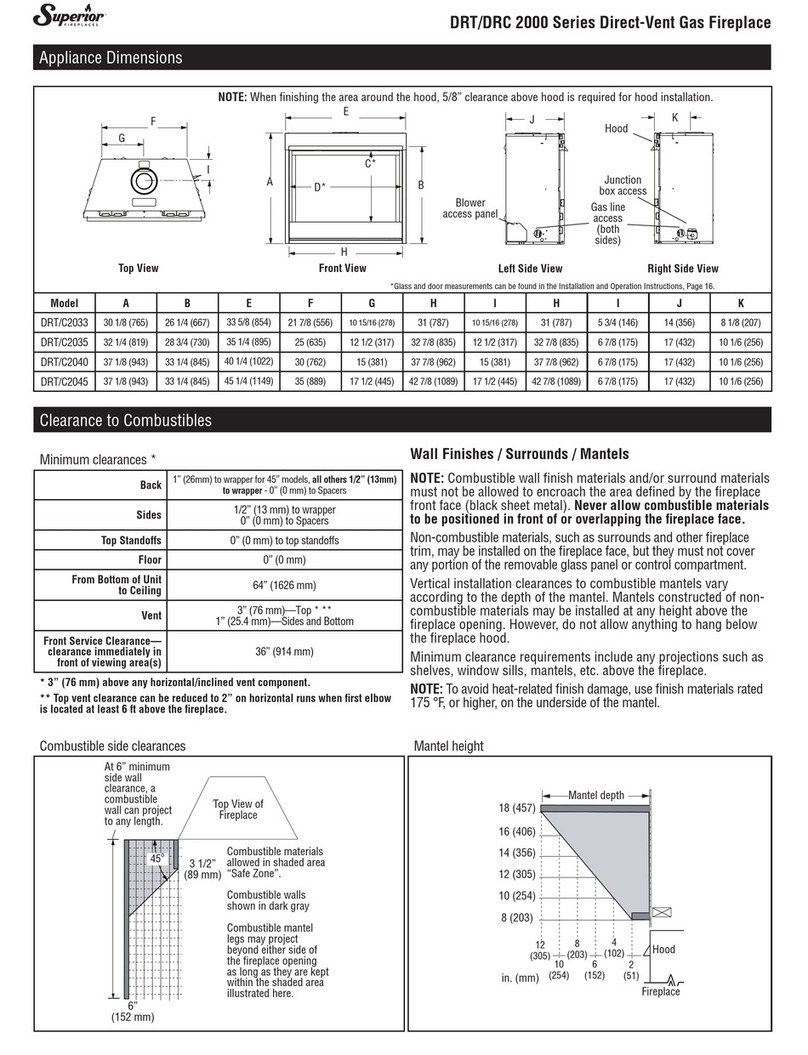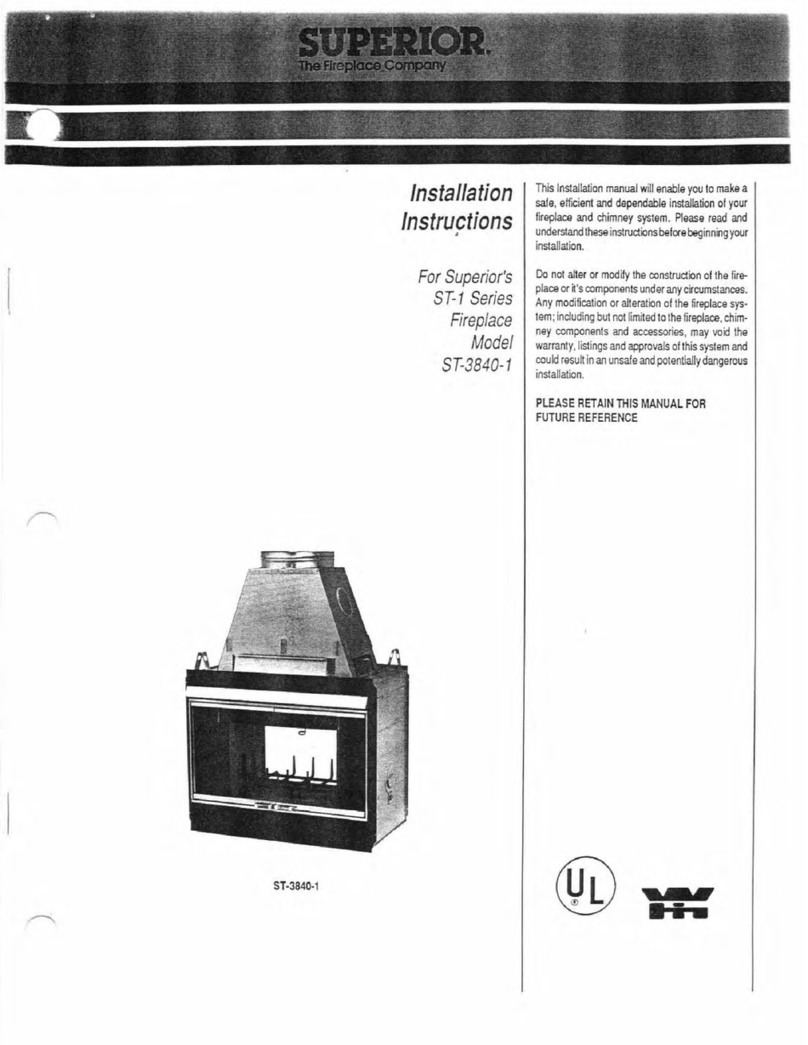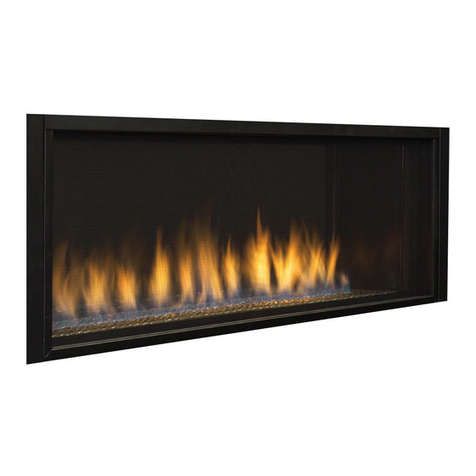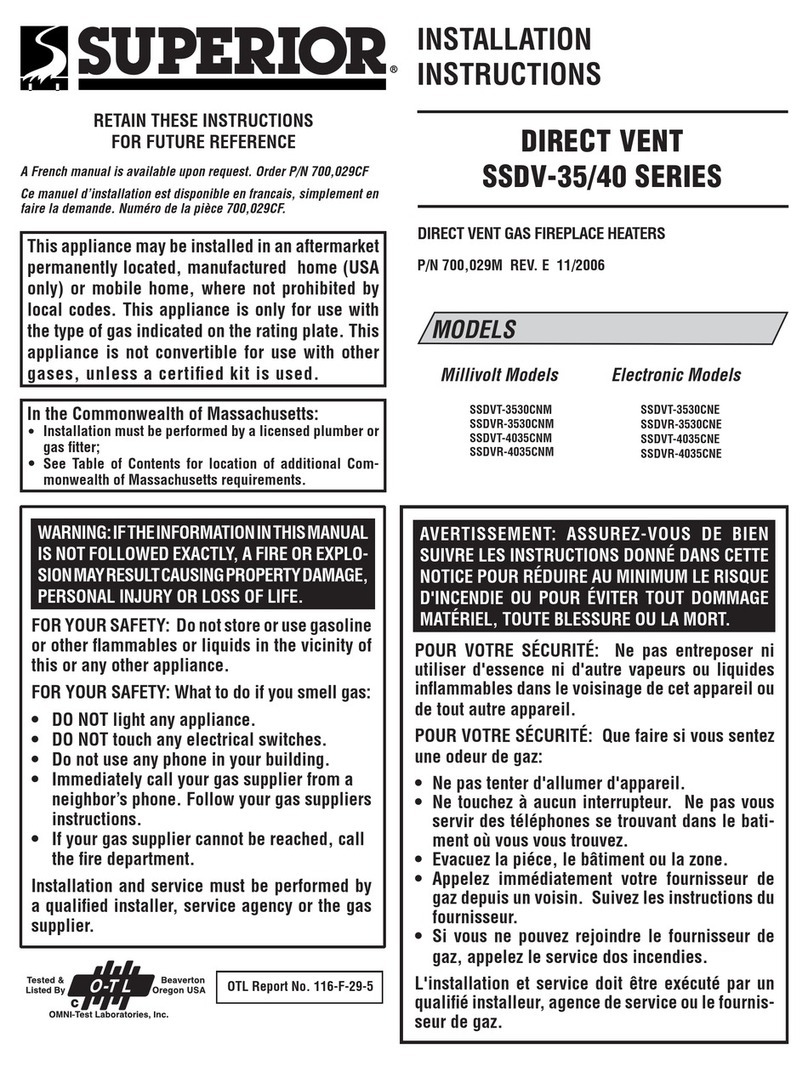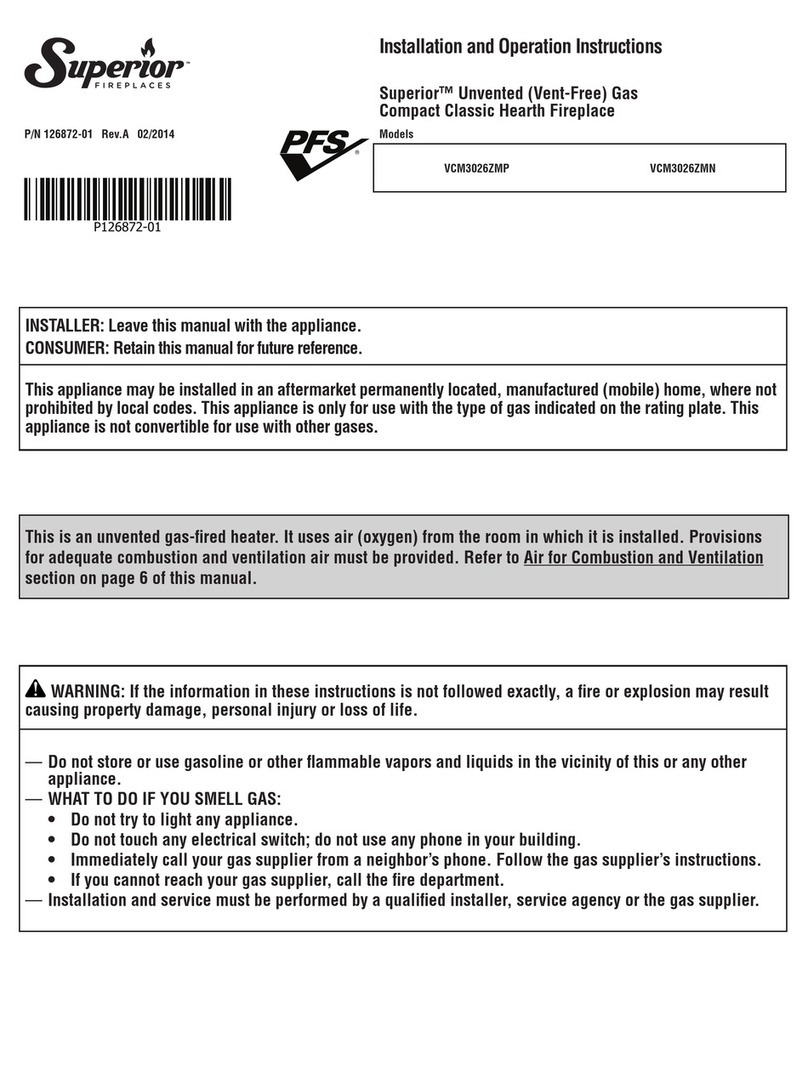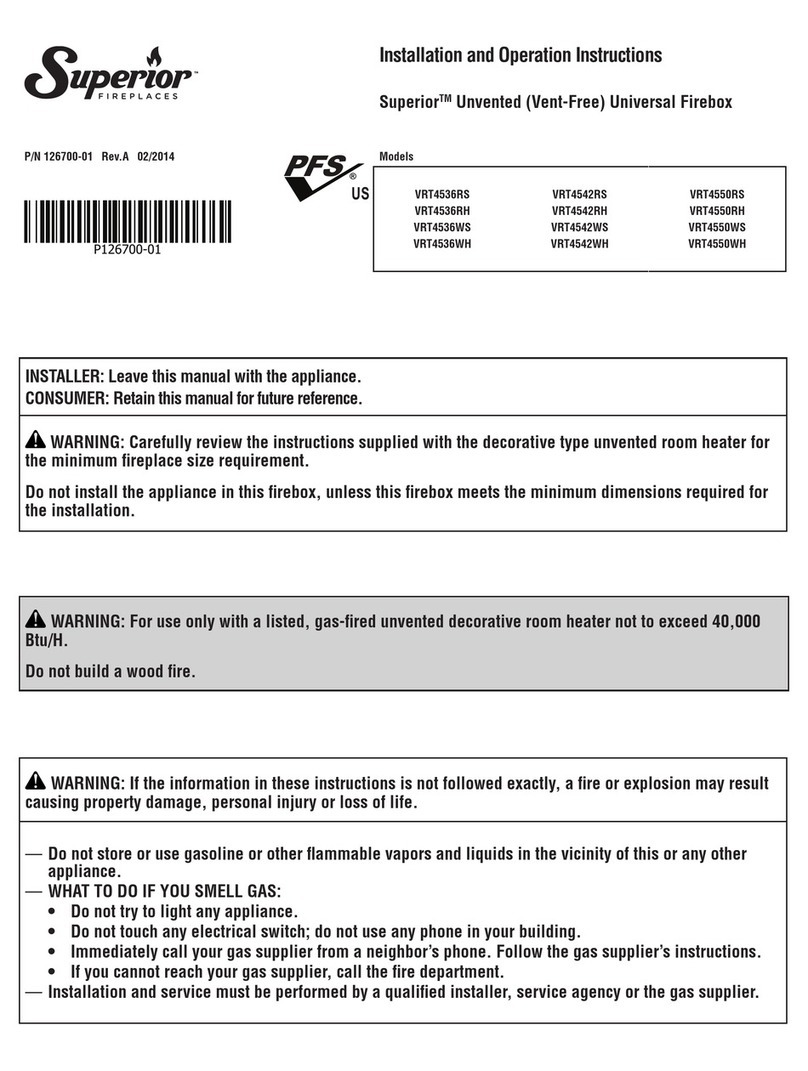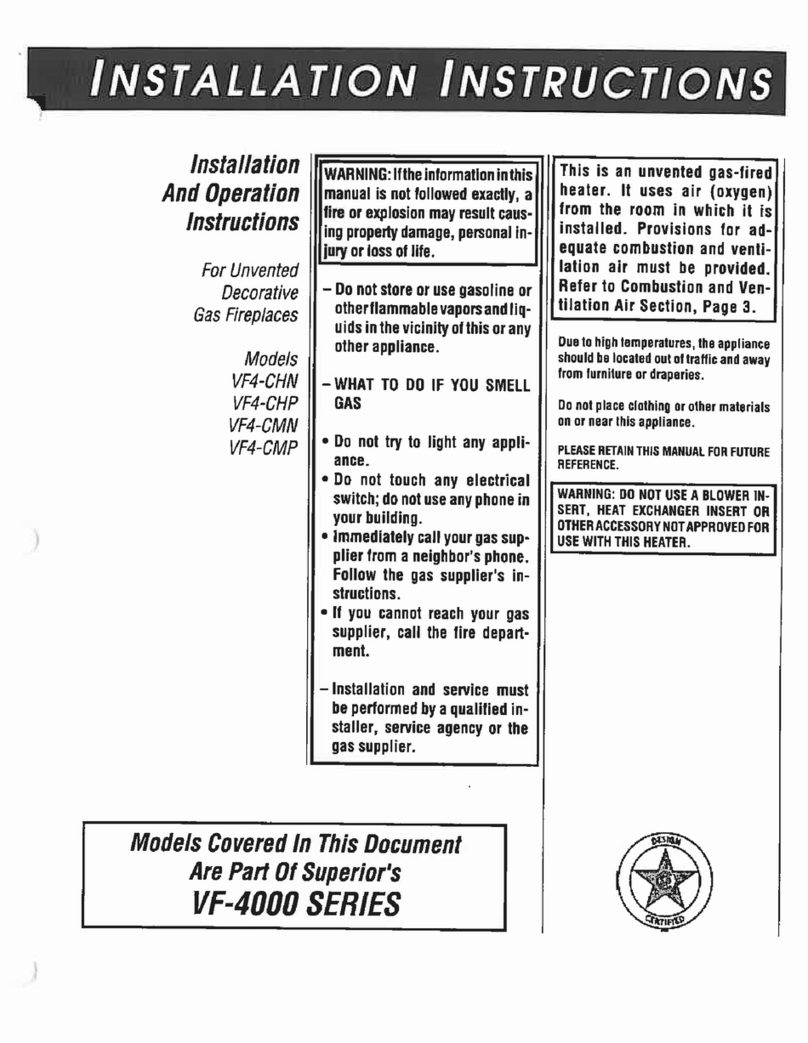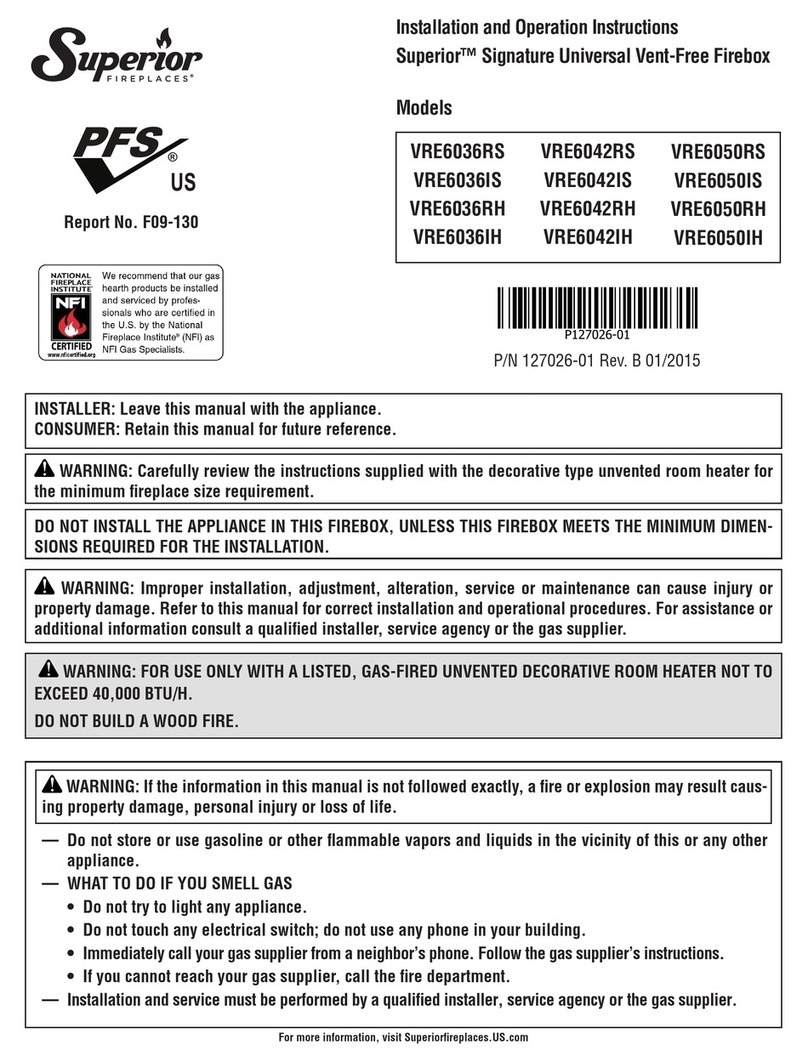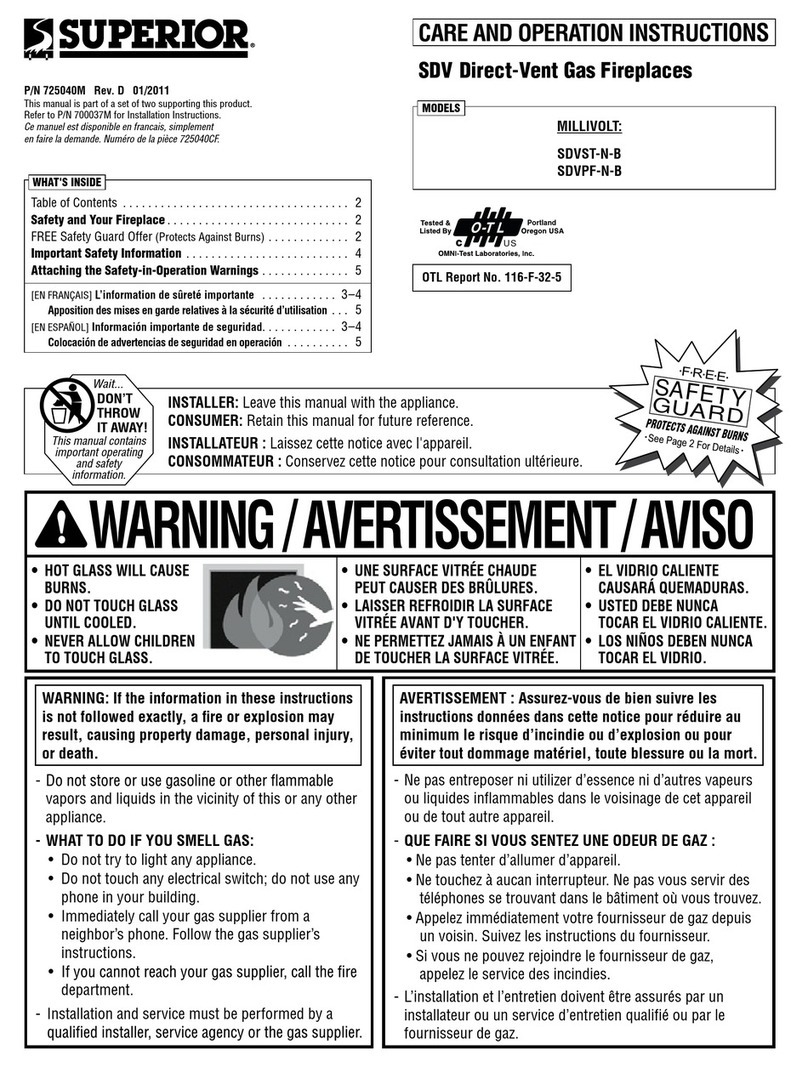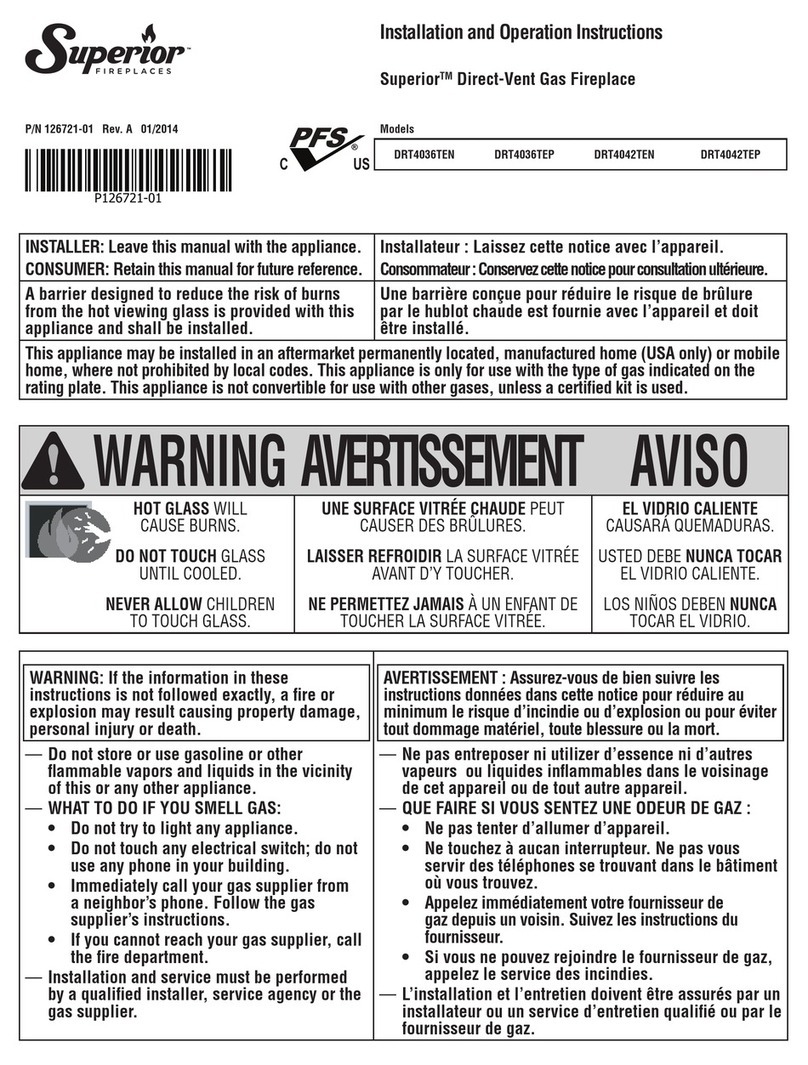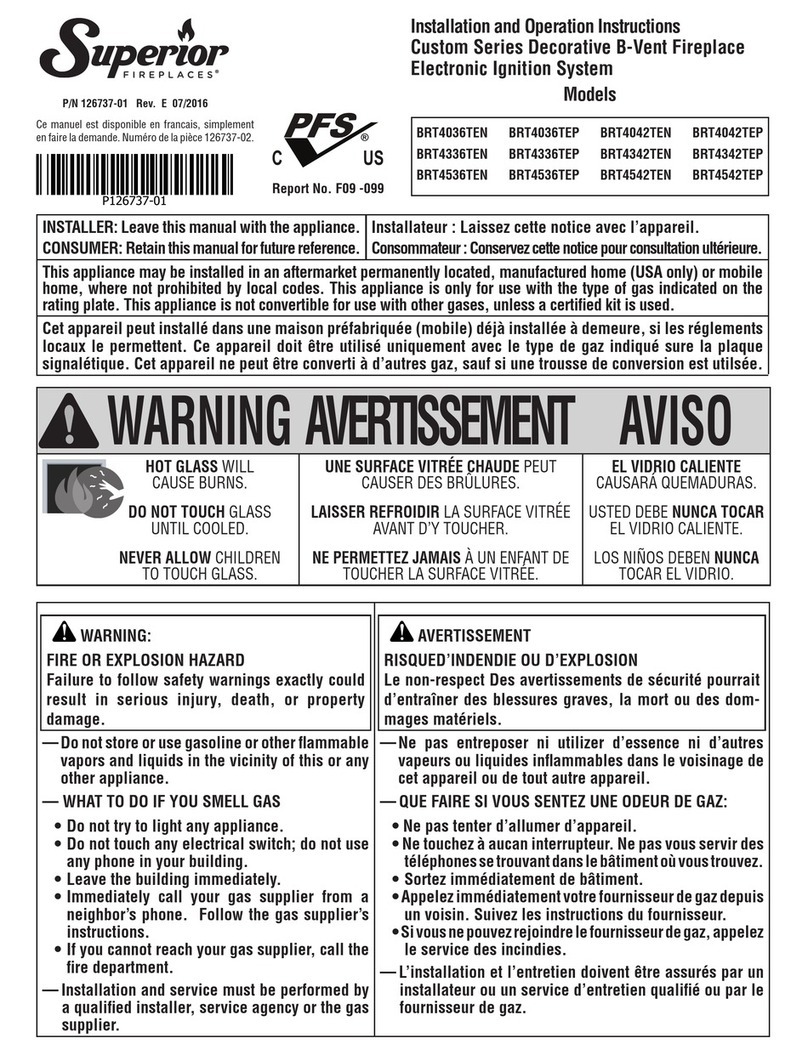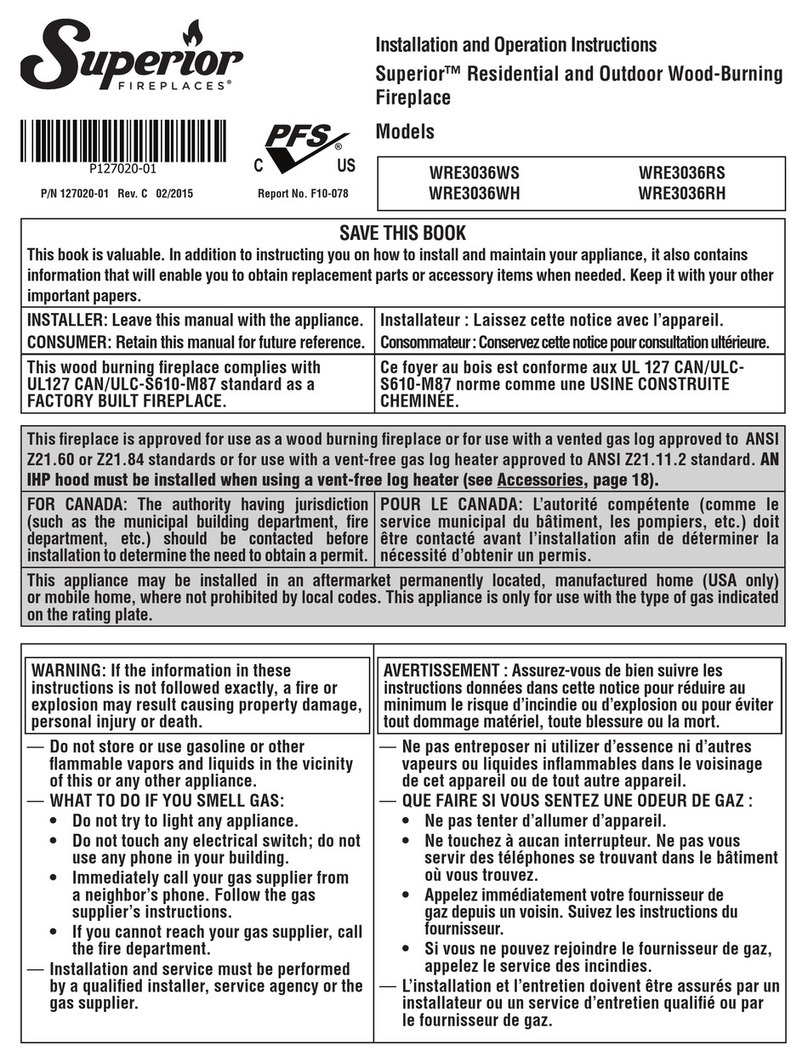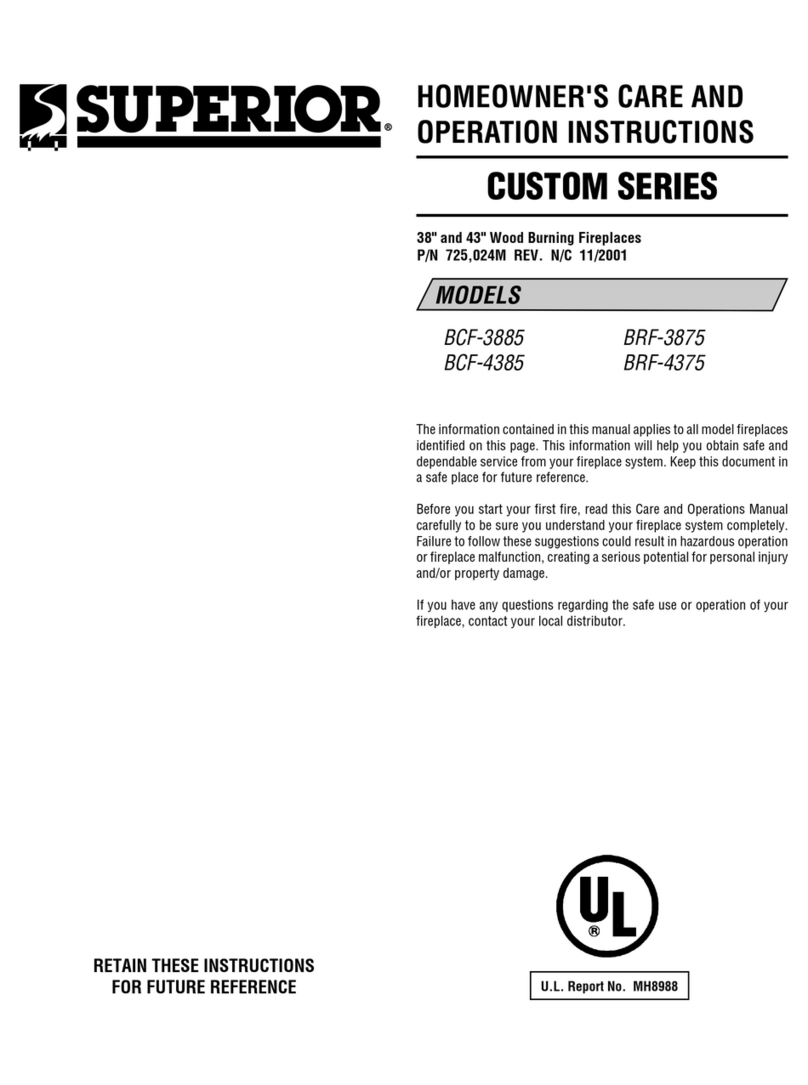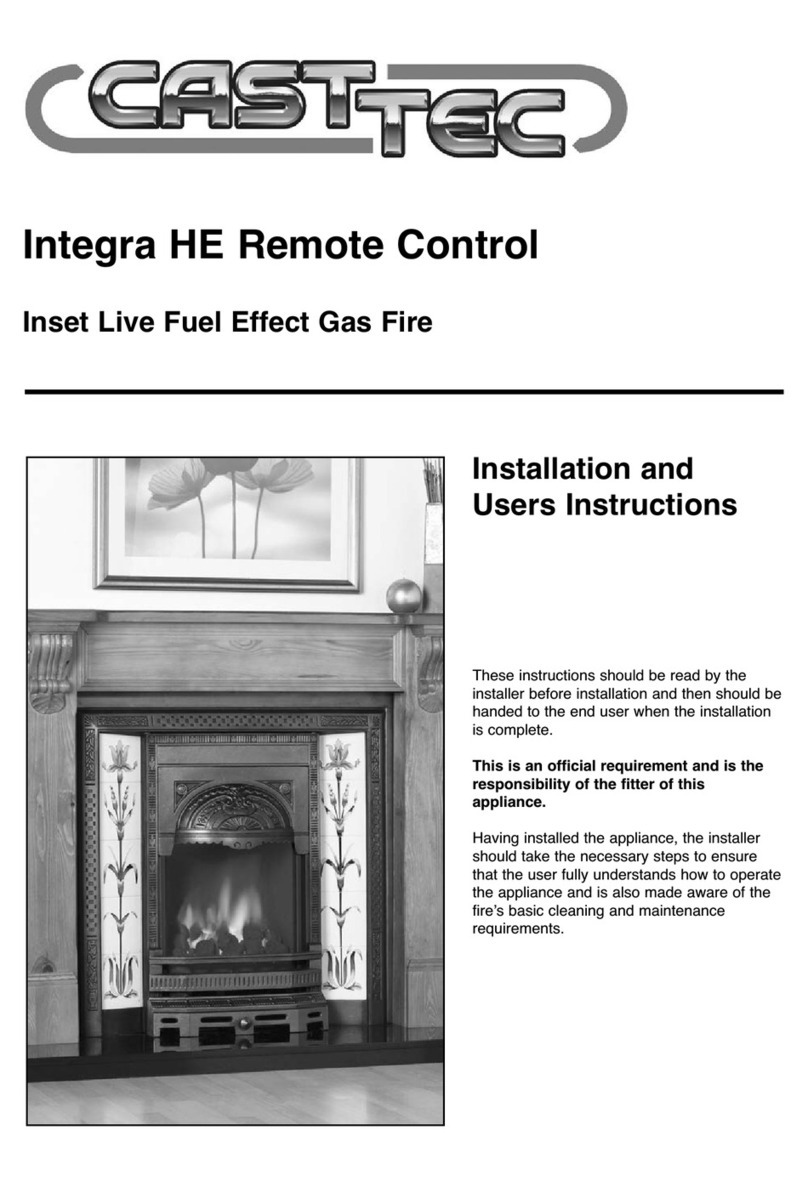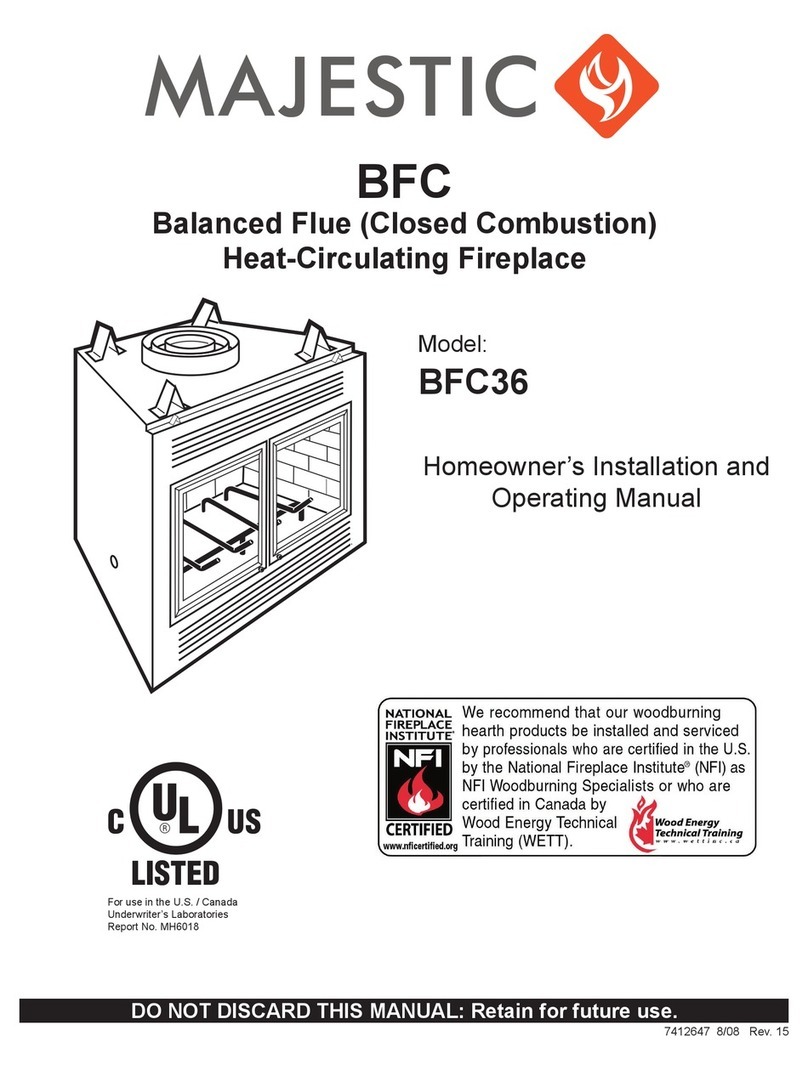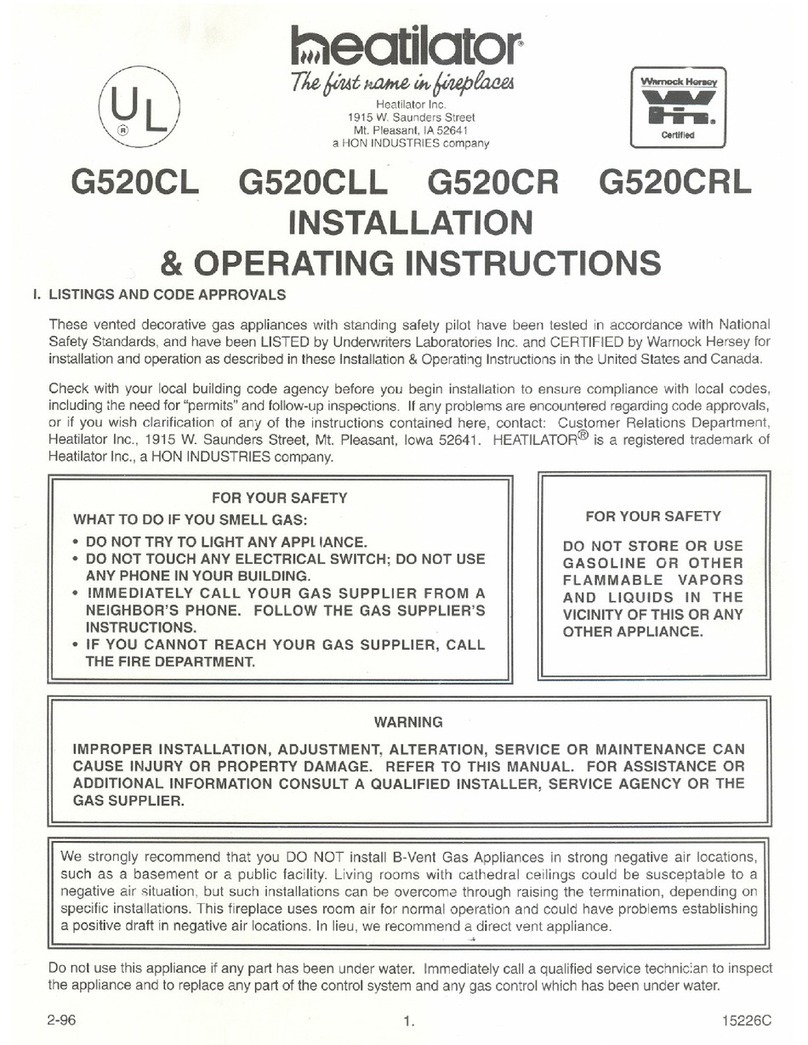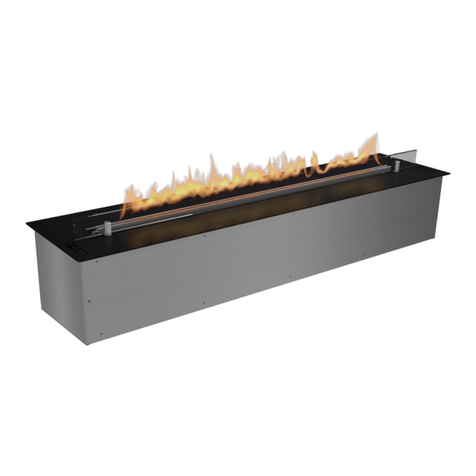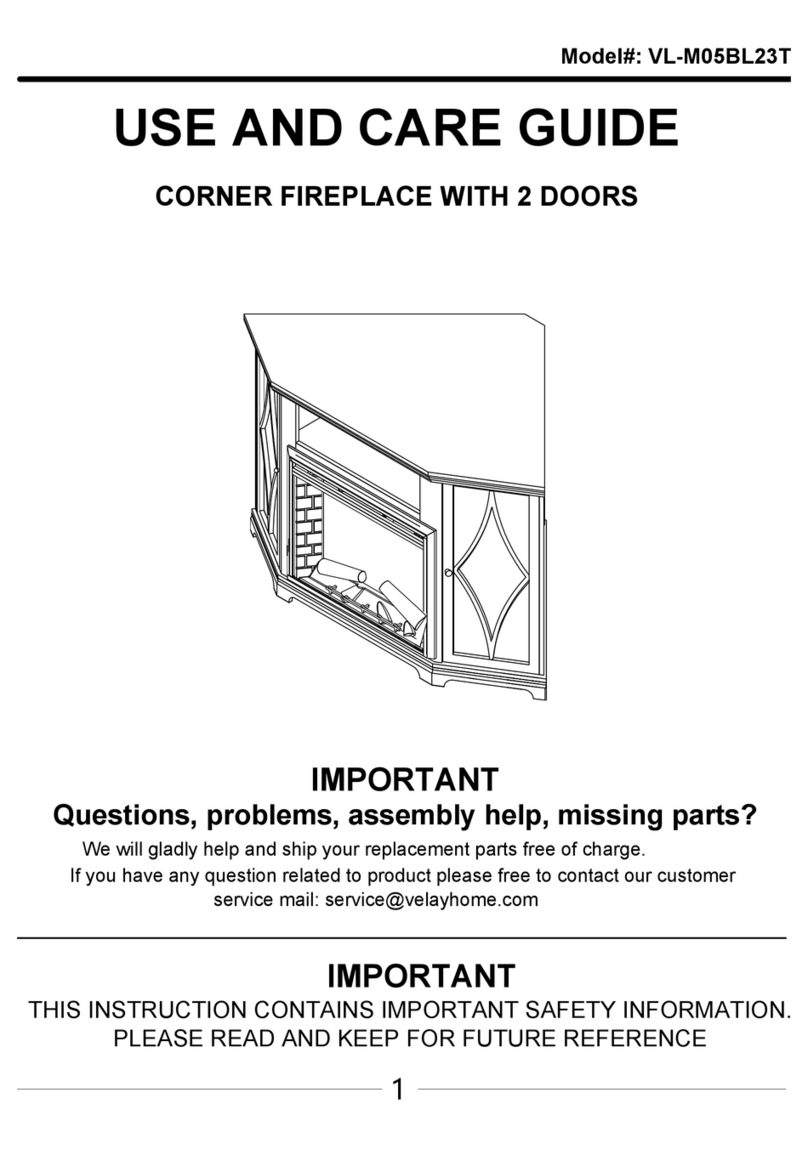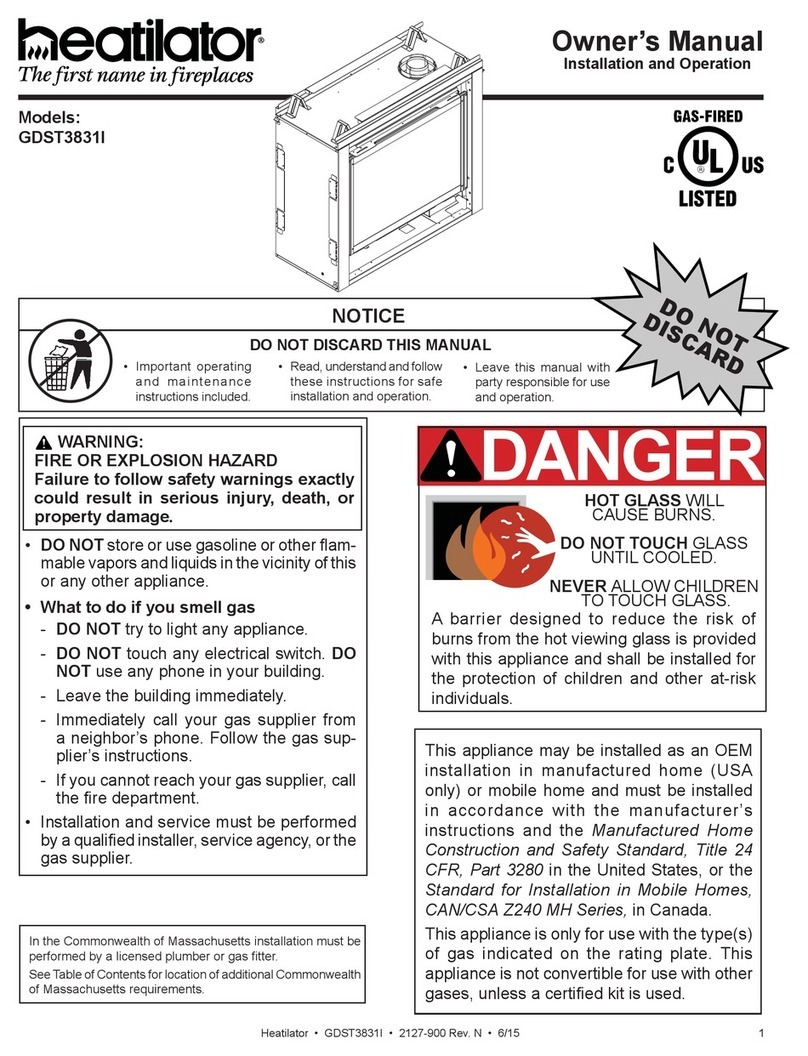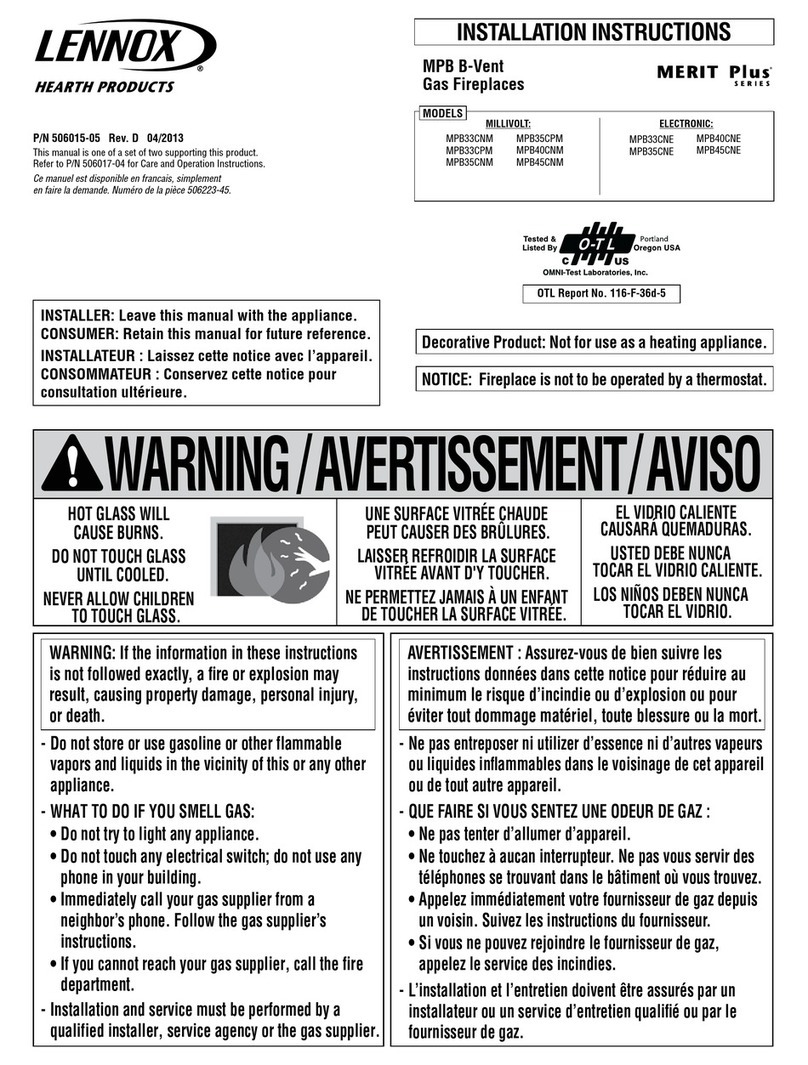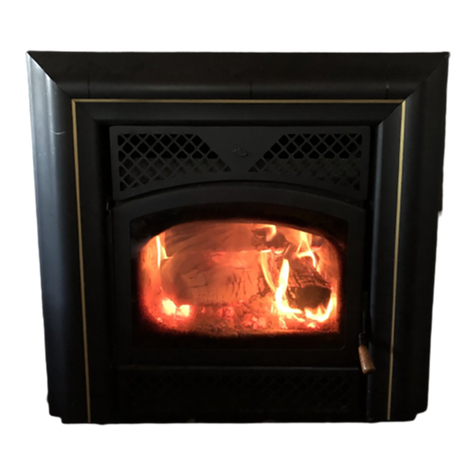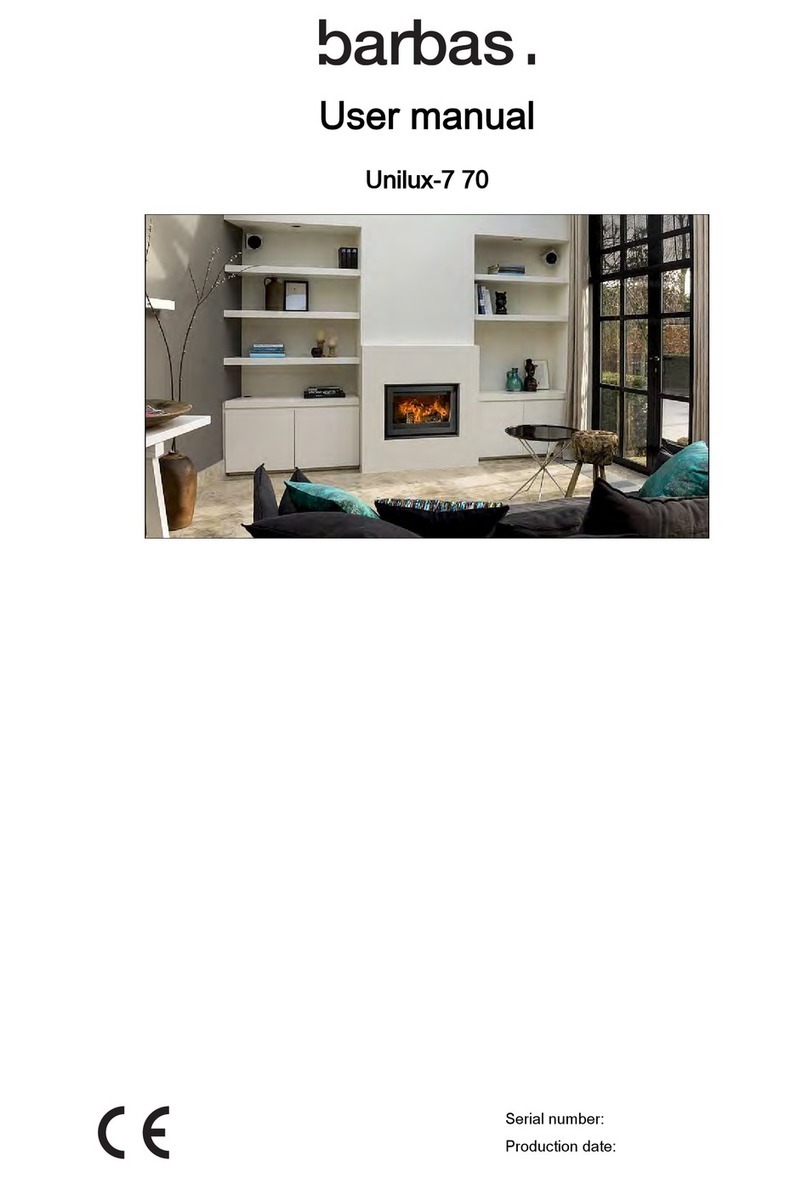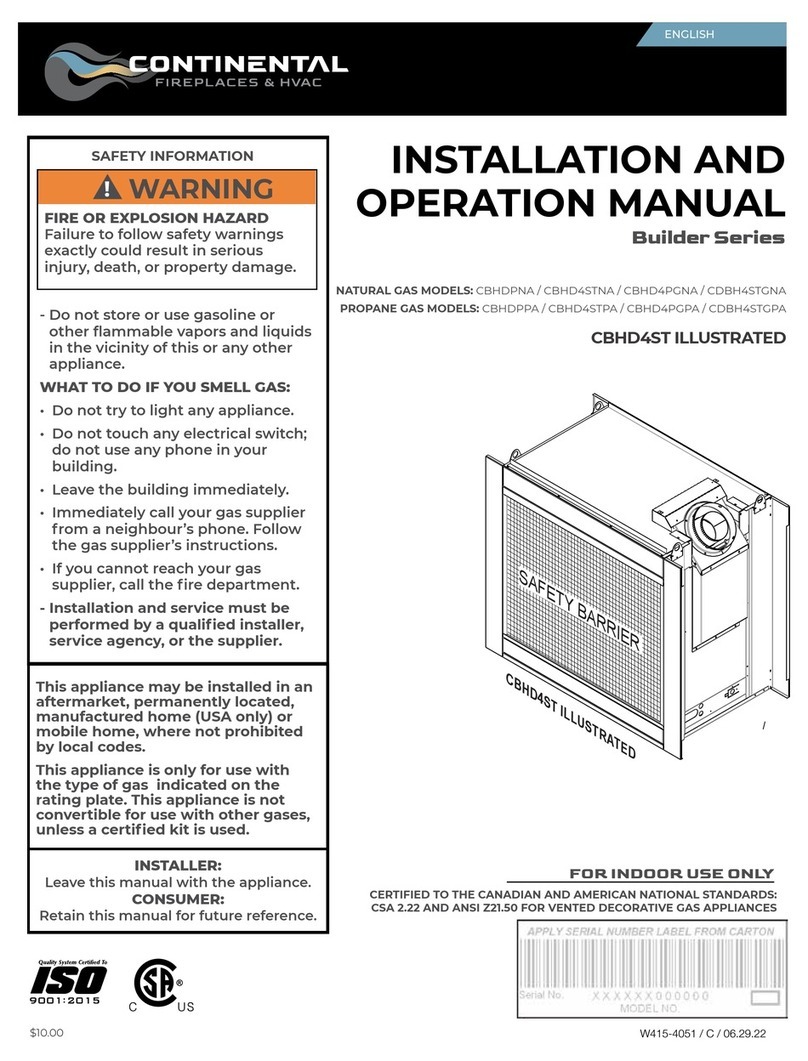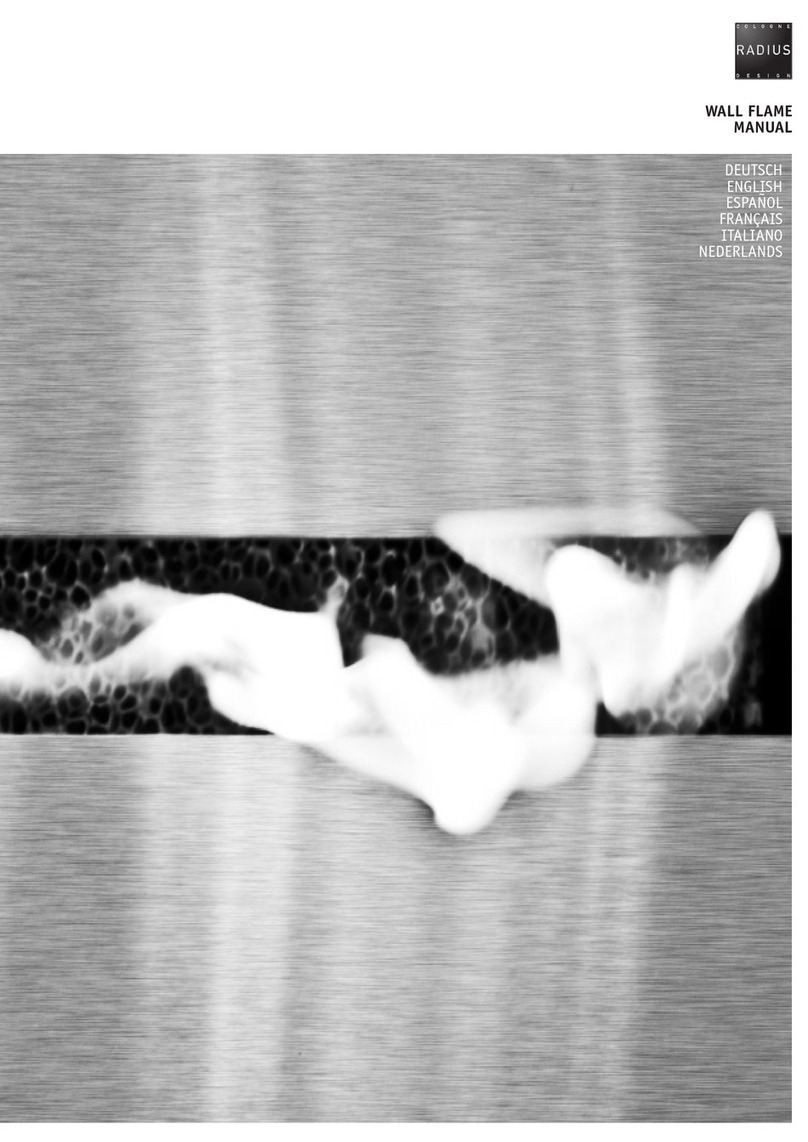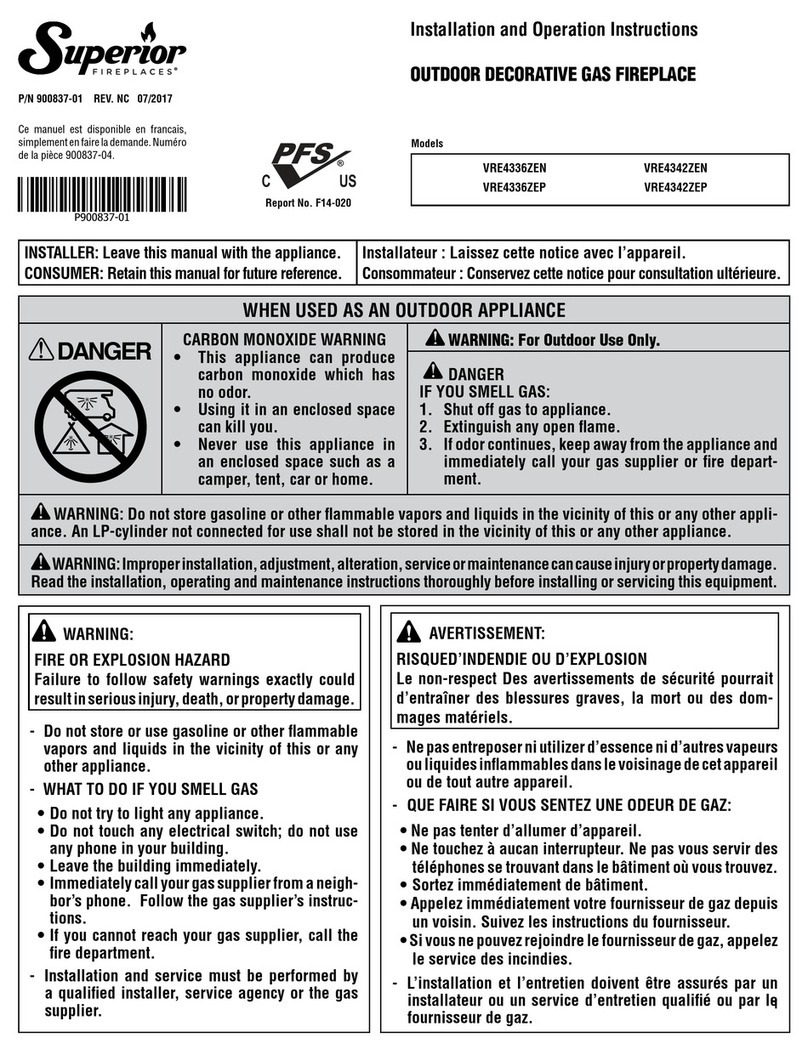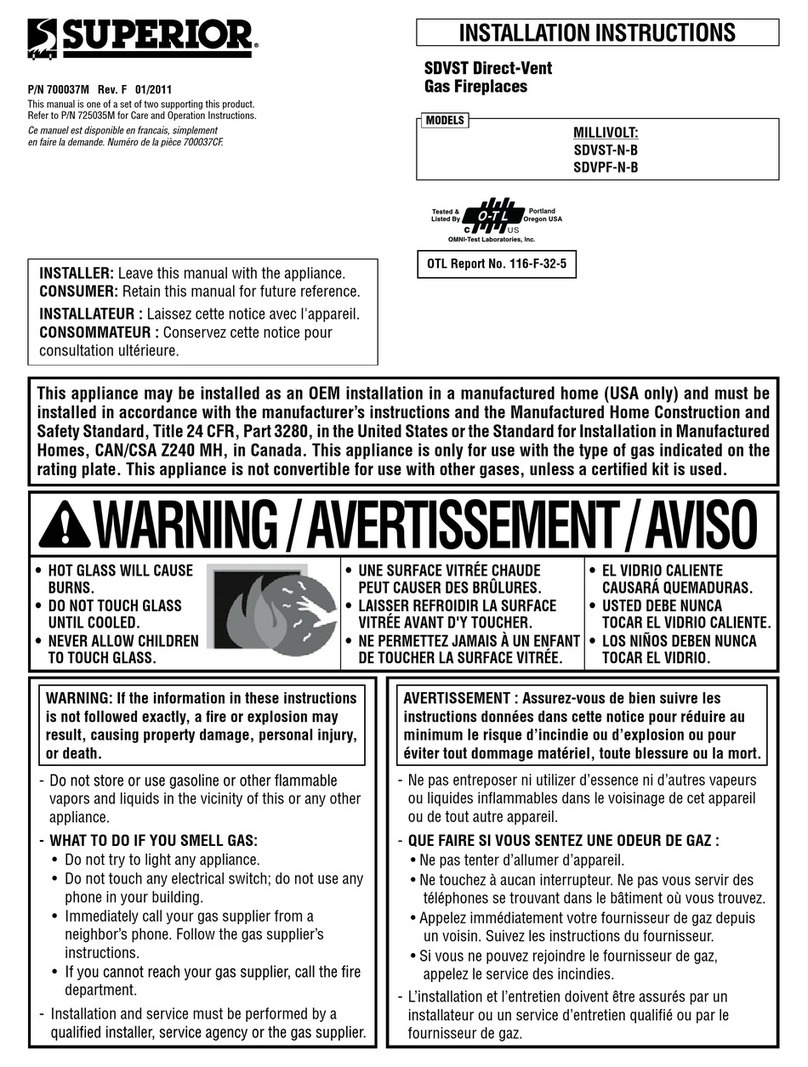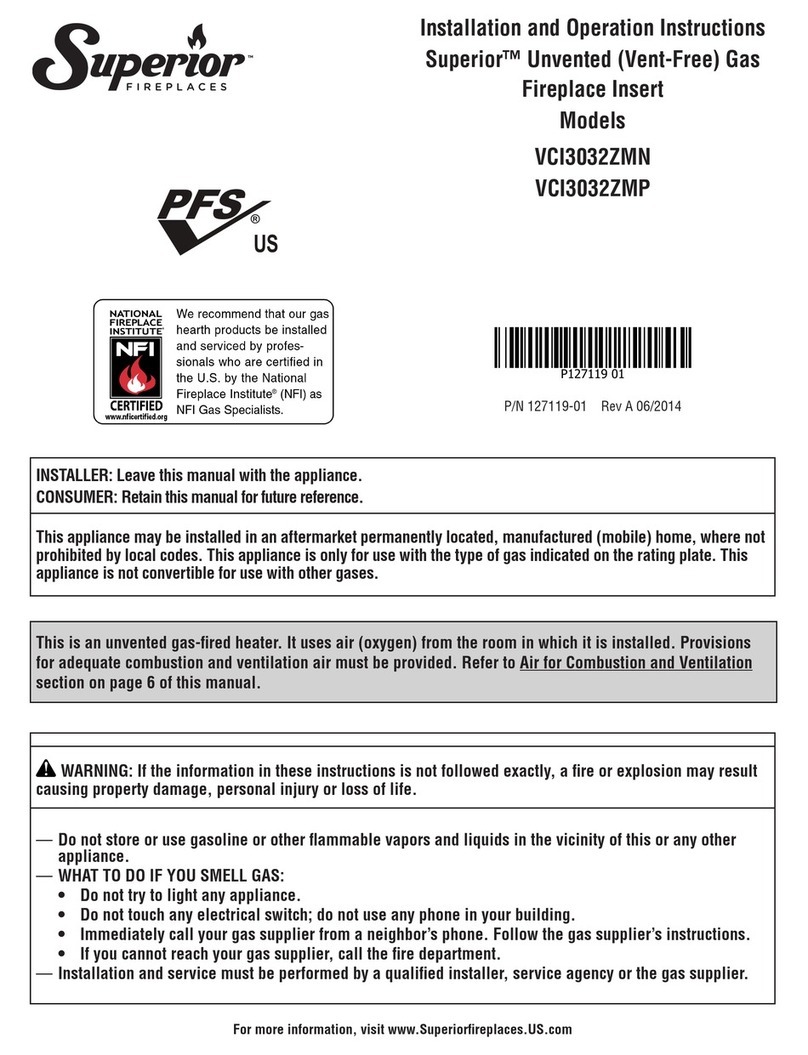
2NOTE: DIAGRAMS & ILLUSTRATIONS NOT TO SCALE.
TABLE OF CONTENTS
General Safety Precautions................ page 2
General Information........................... page 2
Fuels.................................................. page 2
Gas Logs ........................................... page 2
Disposal of Ashes.............................. page 3
Softwood vs Hardwood ..................... page 3
Starting a Fire .................................... page 4
Damper Control ................................. page 4
Glass Door Operating Safety
Precautions and Instructions........... page 4
Combustion Air ................................. page 5
Refractories ....................................... page 5
Maintenance Guidelines..................... page 6
Twice a Year Check-Up...................... page 6
Creosote Formation and Removal...... page 6
Troubleshooting ................................ page 6
Warranty............................................ page 7
Product Reference Information ......... page 7
Replacement Parts ............................ page 7
Accessory Components..................... page 7
Replacement Parts ............................ page 8
15.Neitherthemanufacturernorthesellerwar-
rants “smoke free” operation nor are we
responsibleforinadequatesystemdraftcaused
by mechanical systems, general construction
conditions,inadequatechimneyheights,adverse
wind conditions and/or unusual environmental
factors or conditions beyond our control.
GENERAL INFORMATION
1. The all-steel, multi-wall firebox is the heat
centerofthesystem.Itiswellinsulatedforsafe
clearance to combustibles.
2.Thehearthfloorandsidewallsofthefireboxare
linedwithabrickpatternreinforcedrefractoryfor
the look of authenticity and to provide safety.
3. Themetalchimneysectionsextending from
the firebox top to beyond your roof are two
walled and air-cooled. The inner passage, or
flue, provides the exit for smoke and gases.
4.Thefluedamperisatwoposition(fullyopen
orfullyclosed)mechanismoperatedbyahandle
foundatthecentertopofthefireplaceopening.
It must be open when fire is present so smoke
and gases can escape. It should be closed
ONLYwhenthefireiscompletelyout–keeping
room air from being lost up the flue.
5. Closed screens prevent fire, sparks and
embersfrompoppingoutofthefireboxwhilea
fire is burning. Pull screens back when adding
wood to the firebox.
6. Why use a fuel grate? Besides positioning
the firebed properly, it protects the refractory
floor,backandsidesofthefireplace.Further,it
ensures a proper flow of combustion air into
andaroundthefirebed.Thegratemustbeused
at all times when burning. Your warranty may
be voided without the use of this grate.
7. Remember,your fireplaceisnotintendedto
heat your entire home.
FUELS
Never Use Coal in Your Fireplace
Your fireplace system is not designed to be
used with coal derivative products. The com-
bustion process of certain types of coal can
depositcorrosivematerialsinthefireplaceand
chimney system which can lead to premature
productfailure. Neverusecoal as a fuel inthis
fireplace system.
Gas Logs
Ifyourfireplacesystemwasinstalledwithagas
line,youmaywishtoinstalloneoftwotypesof
gas log sets.
4. Never block or restrict the room air intake
grille across the bottom front or the warm air
outletgrilleacrossthetopfrontofthefireplace.
5.Usecarewhenselectingwindowtreatments
for windows located near the fireplace. Avoid
usingcombustibleflowing window treatments
suchascurtainsonnearbywindowsthatareof
sufficientlengthtobeblowninfrontofanopen
flame when the window is opened.
6. With the fire burning, close the protective
mesh screens to keep sparks and embers IN-
SIDE the firebox.
7. Keep any combustible furniture or decora-
tive pillows at least 36" (914 mm) from the
fireplace opening.
8. Never leave your fireplace unattended while
it is burning.
9. Be careful adding wood fuel to the fire or
handlingfireplacetoolssuchasshovels,tongs
or pokers.
10.Nevermodifyoralteryourfireplacesystem
inany way. To do so may create a potential fire
hazard and void the Limited Warranty.
11. The bottom refractory can be cracked by
excessive abuse such as tossing heavy logs
onto the grate or gouging with fireplace tools.
Exercise caution when adding wood to your
fireplace.
12. DO NOT use a fireplace insert or any other
product not specified by Superior for use with
this fireplace.
13. If you are using your fireplace as a “deco-
rative appliance,” such as with a permanently
installedgaslogset,thefireplacedampermust
be permanently fixed in the open position.
Listed “vent-free” gas log sets may be used
with the damper closed.
14. Always ensure that an adequate supply of
replacement combustion air from the outside of
the house is accessible to the fire to support
normal combustion. Fireplaces consume large
volumes of air during the normal combustion
process. In the event the home is tightly sealed
withmodernenergyefficientfeatures,theoptional
combustion air kit may not provide all the air
required to support combustion. The manufac-
turerisnotresponsibleforanysmokingorrelated
problemsthatmayresultfromthelackofadequate
combustion air. It is the responsibility of the
builder/contractor to ensure that adequate com-
bustion air has been provided for the fireplace.
GENERAL SAFETY PRECAUTIONS
IMPORTANT! READ AND UNDER-
STANDBEFOREYOURFIRSTFIRE.
1. Use SOLID WOOD only for fuel. It is best to
use dry and well seasoned hardwood. Soft
woods tend to burn very quickly. DO NOT use
treated wood, charcoal, coal, trash, driftwood
or woods that have been dipped in tar, pitch,
pine tar, creosote, etc. Wood products made
with synthetic binders, such as plywood, pro-
duce abnormally high temperatures and
sputtering, smoking fires. When burning arti-
ficial logs, please read and follow the
instructions provided by the manufacturer.
Never burn treated construction lumber or
scraps. Thesewoodsburnexcessivelyhotand
may contain chemicals used to treat insects
and fungus. When burned, these chemicals
can pose a significant hazard.
2. NEVER use gasoline, gasoline-type lantern
fuel,kerosene, charcoal lighter fluid,orsimilar
liquids to start or “freshen up” a fire in this
fireplace. Keep any flammable liquids a safe
distance from the fireplace.
3. Keep the chimney damper open while any
fire or smoldering embers are present .
This manual is part of a set of two support-
ingthisproduct. Refertomanual700,040M
(BR/BC-36) or 700,038M (BR/BC-42) for
Installation Instructions.









